Kia Niro vs Mercedes C-Class Sedan – Which model is better for everyday use?
Everyday use, family trips or long-distance drives – here’s where the differences show.
Discover whether Kia Niro or Mercedes C-Class Sedan fits your lifestyle better.
Here’s where it gets real: The technical differences in detail
Costs and Efficiency: Price and efficiency are often the first things buyers look at. Here it becomes clear which model has the long-term edge – whether at the pump, the plug, or in purchase price.
Kia Niro has a clearly advantage in terms of price – it starts at 29100 £, while the Mercedes C-Class Sedan costs 41200 £. That’s a price difference of around 12032 £.
Fuel consumption also shows a difference: the Mercedes C-Class Sedan manages with 1.60 L and is therefore clearly more efficient than the Kia Niro with 2.40 L. The difference is about 0.80 L per 100 km.
As for range, the Mercedes C-Class Sedan performs clearly better – achieving up to 117 km, about 55 km more than the Kia Niro.
Engine and Performance: Power, torque and acceleration say a lot about how a car feels on the road. This is where you see which model delivers more driving dynamics.
When it comes to engine power, the Mercedes C-Class Sedan has a decisively edge – offering 680 HP compared to 180 HP. That’s roughly 500 HP more horsepower.
In acceleration from 0 to 100 km/h, the Mercedes C-Class Sedan is clearly quicker – completing the sprint in 3.40 s, while the Kia Niro takes 9.90 s. That’s about 6.50 s faster.
In terms of top speed, the Mercedes C-Class Sedan performs distinct better – reaching 280 km/h, while the Kia Niro tops out at 185 km/h. The difference is around 95 km/h.
There’s also a difference in torque: the Mercedes C-Class Sedan pulls clearly stronger with 1020 Nm compared to 265 Nm. That’s about 755 Nm difference.
Space and Everyday Use: Beyond pure performance, interior space and usability matter most in daily life. This is where you see which car is more practical and versatile.
Both vehicles offer seating for 5 people.
In curb weight, the Kia Niro is slightly lighter – 1474 kg compared to 1695 kg. The difference is around 221 kg.
In terms of boot space, the Mercedes C-Class Sedan offers minimal more room – 455 L compared to 451 L. That’s a difference of about 4 L.
When it comes to payload, Mercedes C-Class Sedan a bit takes the win – 570 kg compared to 466 kg. That’s a difference of about 104 kg.
Our conclusion: The Mercedes C-Class Sedan proves to be leaves the rival little chance and thus becomes our DriveDuel Champion!
Overall, Mercedes C-Class Sedan is the better all-rounder in this comparison.
Kia Niro
The Kia Niro presents itself as a versatile and eco-friendly SUV, blending a stylish design with advanced hybrid technology. Its spacious interior offers comfort and practicality, making it ideal for both city driving and longer journeys. With a focus on efficiency and sustainability, the Niro is a compelling choice for environmentally conscious drivers.
details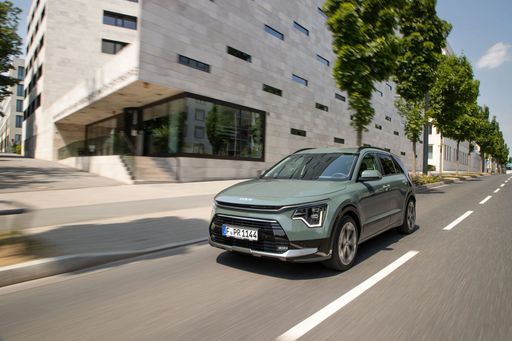 @ press.kia.com
@ press.kia.com
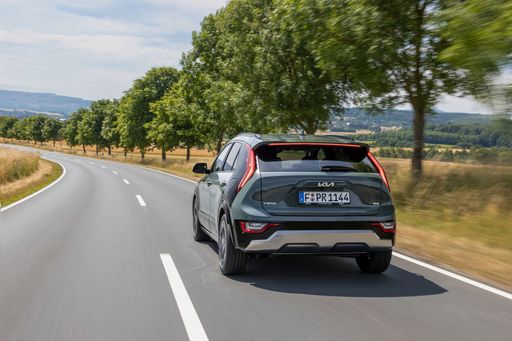 @ press.kia.com
@ press.kia.com
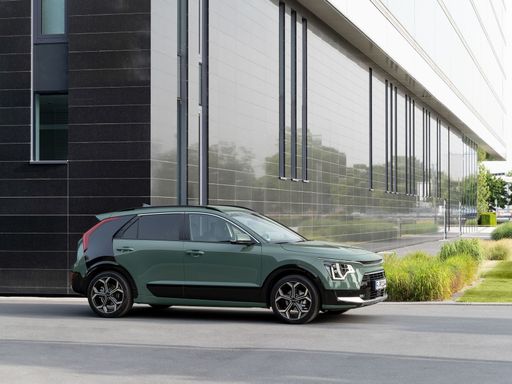 @ press.kia.com
@ press.kia.com
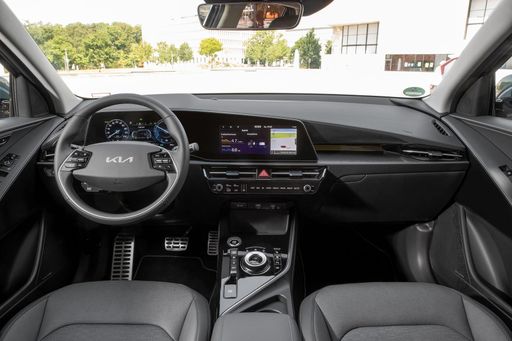 @ press.kia.com
@ press.kia.com
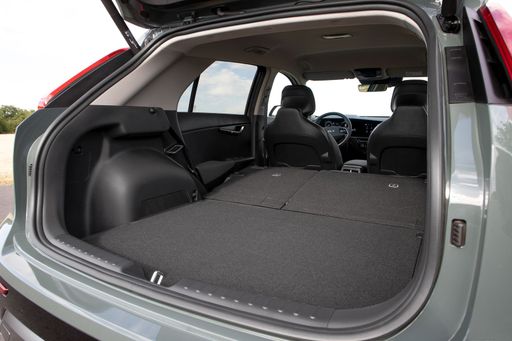 @ press.kia.com
@ press.kia.com
Mercedes C-Class Sedan
The Mercedes-Benz C-Class Sedan embodies a seamless blend of luxury and performance, capturing the quintessential essence of sophisticated driving. Its elegant design is complemented by a meticulously crafted interior, featuring premium materials and innovative technology to enhance comfort and convenience. On the road, the C-Class Saloon offers an impressive driving experience, harmonising precise handling with a composed and comfortable ride.
details @ group-media.mercedes-benz.com
@ group-media.mercedes-benz.com
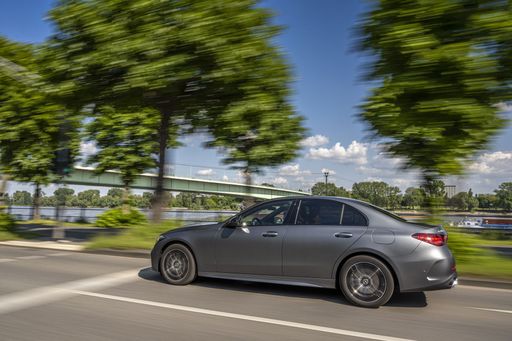 @ group-media.mercedes-benz.com
@ group-media.mercedes-benz.com
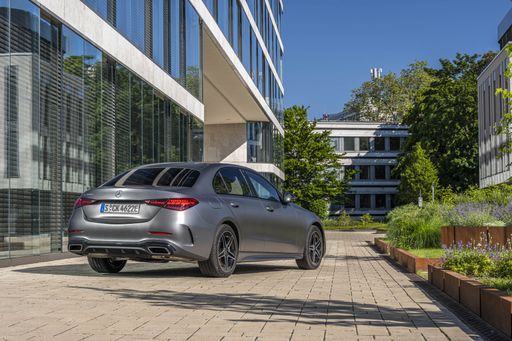 @ group-media.mercedes-benz.com
@ group-media.mercedes-benz.com
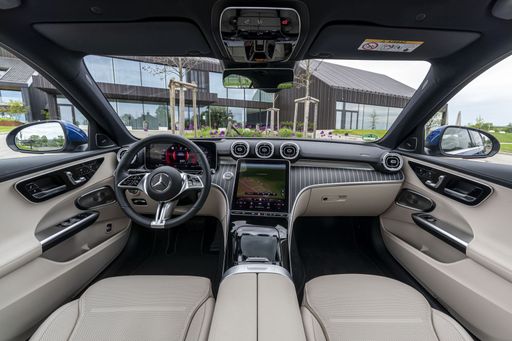 @ group-media.mercedes-benz.com
@ group-media.mercedes-benz.com
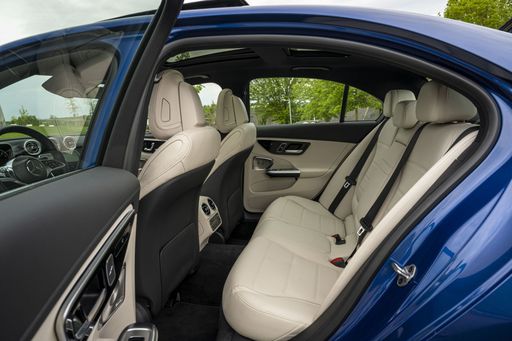 @ group-media.mercedes-benz.com
@ group-media.mercedes-benz.com

|

|
|
|
|
Costs and Consumption |
|
|---|---|
|
Price
29100 - 38600 £
|
Price
41200 - 103100 £
|
|
Consumption L/100km
2.4 - 4.9 L
|
Consumption L/100km
1.6 - 9 L
|
|
Consumption kWh/100km
-
|
Consumption kWh/100km
-
|
|
Electric Range
57 - 62 km
|
Electric Range
11 - 117 km
|
|
Battery Capacity
1.3 - 11.1 kWh
|
Battery Capacity
19.50 kWh
|
|
co2
53 - 111 g/km
|
co2
41 - 205 g/km
|
|
Fuel tank capacity
37 - 42 L
|
Fuel tank capacity
40 - 66 L
|
Dimensions and Body |
|
|---|---|
|
Body Type
SUV
|
Body Type
Sedan
|
|
Seats
5
|
Seats
5
|
|
Doors
5
|
Doors
4
|
|
Curb weight
1474 - 1594 kg
|
Curb weight
1695 - 2195 kg
|
|
Trunk capacity
348 - 451 L
|
Trunk capacity
280 - 455 L
|
|
Length
4420 mm
|
Length
4751 - 4842 mm
|
|
Width
1825 mm
|
Width
1820 - 1900 mm
|
|
Height
1545 mm
|
Height
1438 - 1458 mm
|
|
Max trunk capacity
1342 - 1445 L
|
Max trunk capacity
-
|
|
Payload
466 kg
|
Payload
480 - 570 kg
|
Engine and Performance |
|
|---|---|
|
Engine Type
Full Hybrid, Plugin Hybrid
|
Engine Type
Petrol MHEV, Plugin Hybrid, Diesel MHEV
|
|
Transmission
Automatic
|
Transmission
Automatic
|
|
Transmission Detail
Dual-Clutch Automatic
|
Transmission Detail
Automatic Gearbox
|
|
Drive Type
Front-Wheel Drive
|
Drive Type
Rear-Wheel Drive, All-Wheel Drive
|
|
Power HP
138 - 180 HP
|
Power HP
183 - 680 HP
|
|
Acceleration 0-100km/h
9.9 - 11.4 s
|
Acceleration 0-100km/h
3.4 - 8.6 s
|
|
Max Speed
170 - 185 km/h
|
Max Speed
230 - 280 km/h
|
|
Torque
265 Nm
|
Torque
250 - 1020 Nm
|
|
Number of Cylinders
4
|
Number of Cylinders
4
|
|
Power kW
102 - 132 kW
|
Power kW
135 - 500 kW
|
|
Engine capacity
1580 cm3
|
Engine capacity
1496 - 1999 cm3
|
General |
|
|---|---|
|
Model Year
2025
|
Model Year
2024 - 2025
|
|
CO2 Efficiency Class
C, B
|
CO2 Efficiency Class
E, B, D, G
|
|
Brand
Kia
|
Brand
Mercedes-Benz
|
Is the Kia Niro offered with different drivetrains?
The Kia Niro is available as Front-Wheel Drive.
The prices and data displayed are estimates based on German list prices and may vary by country. This information is not legally binding.
